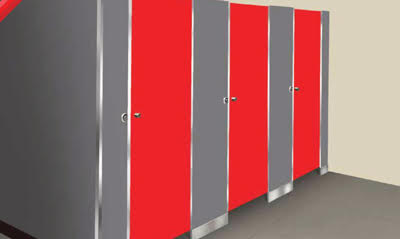- Alex Grid
- May 9, 2023
- 2 min read
Toilet Cubicles: The Ultimate Guide
Toilet cubicles are an essential component of any public restroom. They provide privacy, comfort, and hygiene to users, and they play a crucial role in ensuring that public restrooms are accessible and functional for all individuals. In this guide, we will explore the various types of toilet cubicles available, their features and benefits, and some important factors to consider when selecting the right cubicles for your facility.
Types of Toilet Cubicles
Toilet cubicles come in various types, each with its unique features and benefits. Some of the most popular types of toilet cubicles include:
Standard Cubicles
Standard toilet cubicles are the most common type of cubicle. They are typically made of laminated panels and are available in a wide range of colors and designs. Standard cubicles are easy to clean and maintain, making them an ideal choice for high-traffic public restrooms.
Accessible Cubicles
Accessible cubicles are designed to accommodate users with disabilities. They are spacious and have wider doors to allow wheelchair access. Accessible cubicles also feature support rails and other features that make them easier to use for individuals with disabilities.
Children's Cubicles
Children's cubicles are designed to accommodate young users. They are smaller in size and feature lower-height doors and toilets. Children's cubicles are ideal for use in schools, daycare centers, and other facilities that cater to children.
Features and Benefits of Toilet Cubicles
Toilet cubicles offer several features and benefits, including:
Privacy
Toilet cubicles provide users with a private space to use the restroom, ensuring that they can use the facilities without feeling exposed or vulnerable.
Hygiene
Toilet cubicles are easy to clean and maintain, reducing the risk of the spread of germs and bacteria.
Accessibility
Toilet cubicles are designed to accommodate users of all ages and abilities, ensuring that everyone can use the facilities comfortably and safely.
Aesthetics
Toilet cubicles are available in a wide range of colors and designs, allowing you to choose cubicles that complement your facility's décor.
Factors to Consider When Selecting Toilet Cubicles
When selecting toilet cubicles for your facility, there are several factors to consider, including:
Budget
Toilet cubicles are available at different price points. Consider your budget when selecting cubicles, and choose those that offer the best value for money.
Space
Consider the available space in your restroom when selecting toilet cubicles. Choose cubicles that fit comfortably in the available space, ensuring that users have enough room to use the facilities comfortably.
Accessibility Requirements
If your facility caters to users with disabilities, choose cubicles that are accessible and meet the necessary requirements for wheelchair access and other accessibility features.
Conclusion
Toilet cubicles are an essential component of any public restroom. They offer privacy, hygiene, accessibility, and aesthetic value to users, making them an important investment for any facility. When selecting toilet cubicles for your facility, consider the different types available, their features and benefits, and the factors to consider when making your selection. With the right toilet cubicles, you can create a functional, comfortable, and hygienic restroom that meets the needs of all users.






